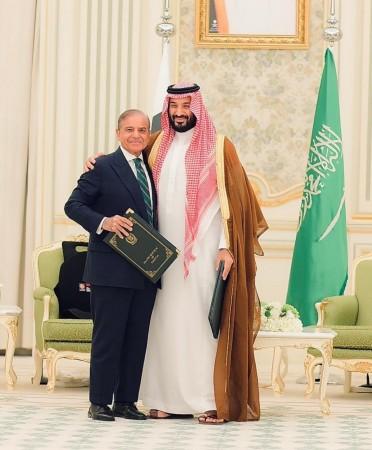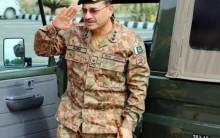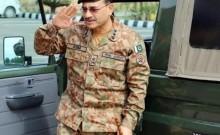
On September 17, 2025, the signing of the Strategic Mutual Defense Agreement between Pakistan and Saudi Arabia in Riyadh marked a pivotal moment in South Asian and Middle Eastern geopolitics. Inked during Pakistani Prime Minister Shehbaz Sharif's state visit, with Crown Prince Mohammed bin Salman and Pakistan's Army Chief Field Marshal Asim Munir present, the agreement formalizes decades of informal security ties rooted in the 1951 Treaty of Friendship and the 1982 Bilateral Security Cooperation Agreement.
This pact, described by analysts as a "watershed" for regional alliances, introduces new strategic complexities for India, a key player in the Indo-Pacific and Gulf regions. While not a foreign policy failure for New Delhi, it presents a tactical setback requiring a sophisticated, multi-dimensional response. This development calls for an examination of the deal's contours, its implications for India, and the strategic, diplomatic, and economic imperatives for New Delhi to navigate this evolving landscape.
The Strategic Mutual Defense Agreement: A Closer Look
The agreement commits both nations to treat aggression against one as an attack on both, encompassing joint military responses, intelligence sharing, technology transfers, and co-production of defense equipment. It builds on historical ties, including Pakistan's deployment of approximately 5000 troops to Saudi Arabia since the 1960s and the training of over 8000 Saudi military personnel by Pakistani forces. A significant, though ambiguously worded, provision involves Pakistan's nuclear capabilities. Defense Minister Khawaja Asif's statement that Islamabad's nuclear arsenal "will be made available" to Riyadh if needed marks the first explicit acknowledgment of extending Pakistan's nuclear umbrella to the Gulf, potentially forming a "Sunni nuclear axis" amid tensions with Iran, Houthi rebels, and Israel.
The deal's timing is critical. It follows Israel's September 9, 2025, airstrike on Doha, targeting Hamas leaders, which exposed vulnerabilities in Gulf security frameworks and eroded trust in U.S. guarantees, despite the presence of 40000 to 50000 American troops in the region. Saudi Arabia, hedging against perceived U.S. unreliability, views the pact as a strategic pivot toward Islamic solidarity, echoing resolutions from recent Organization of Islamic Cooperation and Arab League summits. For Pakistan, the agreement secures economic lifelines, including a $3 billion loan extended by Riyadh in December 2024, bolstering its fragile economy.

Strategic Implications for India
For India, the pact arrives at a sensitive juncture, following a brief but intense military conflict with Pakistan in May 2025 over the Pahalgam terror attack and India's retaliatory Operation Sindoor strikes on Pakistani bases. The agreement introduces several strategic challenges:
1. Military Dynamics: The pact enhances Pakistan's access to Saudi funding, potentially enabling arms upgrades, including advanced U.S. weaponry channeled through Saudi purchases, such as F-15 jets or Eurofighters. This could embolden Pakistan in border disputes, particularly in Kashmir, raising the risk of escalation in future Indo-Pak conflicts. The nuclear dimension complicates India's deterrence posture, as Saudi Arabia's implicit backing could prolong any conventional war, forcing New Delhi to account for Gulf-based contingencies. The presence of approximately 2600000 Indian expatriates in Saudi Arabia adds a layer of vulnerability, as regional tensions could disrupt their safety or remittances, which totaled $11.8 billion in 2024.
2. Geopolitical Shifts: The agreement signals Saudi Arabia's pivot from U.S.-centric alliances toward a broader Islamic coalition, potentially inspiring similar pacts with nations like the UAE or Qatar. This could evolve into an "Islamic NATO," with Pakistan as a linchpin, amplifying its regional influence. China, a key stakeholder in Pakistan's China-Pakistan Economic Corridor and Saudi Arabia's Belt and Road Initiative partner, stands to gain indirectly, reinforcing a counterbalance to India's Indo-Pacific strategy. The deal may also tilt the Organization of Islamic Cooperation's stance on Kashmir toward Pakistan, challenging India's diplomatic efforts in the Muslim world.
3. Economic Considerations: Saudi Arabia is India's fourth-largest trade partner, with bilateral trade reaching $41.88 billion in fiscal year 2024-2025, including 18 percent of India's crude oil imports. The pact could indirectly strengthen Pakistan's economy, enabling military modernization and intensifying proxy threats, such as terrorism, along India's borders. Any strain in India-Saudi relations risks energy price volatility or disruptions to the 40 percent of Saudi Arabia's workforce comprised of Indian laborers. Moreover, the India-Middle East-Europe Economic Corridor, a flagship initiative to counter China's Belt and Road Initiative, could face delays if Saudi Arabia's trust in India wanes.
Is This a Foreign Policy Failure for India?
Labeling the pact a foreign policy failure for India oversimplifies a complex geopolitical reality. India's "multi-alignment" strategy has yielded significant successes, including over $100 billion in Saudi investments and deepening defense ties, exemplified by a $225 million munitions deal in 2024 and the seventh Joint Defence Committee meeting in 2025. The Ministry of External Affairs, in a statement on September 19, 2025, noted that New Delhi was "aware" of the pact's development and would "study its implications for national security and regional stability." Diplomatic sources confirm Saudi Arabia kept India informed, signaling no immediate rupture in bilateral ties.
Critics, including opposition leaders and former envoys, argue the deal reflects India's failure to preempt Pakistan's entrenchment in the Gulf, particularly amid U.S. strategic retrenchment. However, this view overlooks India's robust Gulf outreach, including Prime Minister Narendra Modi's personal rapport with Crown Prince Mohammed bin Salman and strategic partnerships with the UAE and Oman. The pact is less a direct rebuke of India and more a Saudi response to regional insecurities. New Delhi's measured response, emphasizing its "wide-ranging strategic partnership" with Riyadh, demonstrates diplomatic maturity rather than defeat. Over the long term, the agreement may even catalyze deeper U.S.-India security convergence to counterbalance the emerging Pakistan-Saudi-China axis.
India's Strategic Imperatives
To navigate this shifting landscape, India must adopt a proactive, multi-pronged strategy that balances diplomacy, military preparedness, and economic resilience:
1. Diplomatic Engagement: India should intensify back-channel talks with Saudi Arabia to reaffirm economic and defense ties while seeking assurances that the pact will not extend to Indo-Pak conflicts. Leveraging Modi's rapport with Mohammed bin Salman is critical. New Delhi should also strengthen outreach to moderate Gulf states like the UAE and Oman, positioning itself as a stabilizing force in the region. Engaging the Organization of Islamic Cooperation to prevent anti-India resolutions, particularly on Kashmir, is essential.
2. Military Modernization: India must accelerate border fortifications along the Line of Control and International Border, investing in asymmetric capabilities such as cyber warfare and intelligence. Deepening ties with the Quadrilateral Security Dialogue and the I2U2 grouping (India, Israel, UAE, U.S.) can facilitate technology transfers and joint exercises to counterbalance Pakistan's Gulf-backed capabilities. Exploring defense cooperation with Israel and the UAE can further offset Saudi-Pakistan alignment.
3. Economic Diversification: To mitigate energy risks, India should diversify its oil imports, increasing reliance on suppliers like Russia and U.S. liquefied natural gas, which accounted for 12 percent and 8 percent of imports, respectively, in 2024. Promoting the India-Middle East-Europe Economic Corridor as a viable alternative to China's Belt and Road Initiative can reinforce India's economic leverage in the Gulf. Protecting the interests of its 2600000 expatriates in Saudi Arabia, who contribute significantly to remittances, requires proactive labor diplomacy.
4. Regional Alliances: India should champion the expansion of the Abraham Accords, integrating more Gulf states into a framework that aligns with its interests. Positioning itself as a neutral mediator in Middle Eastern disputes can enhance its soft power and counter Pakistan's influence in Islamic forums.
5. Domestic Narrative Management: The government must counter opposition narratives framing the pact as a diplomatic setback. Highlighting India's proactive awareness and robust Saudi ties, as evidenced by ongoing high-level engagements, can maintain public confidence in New Delhi's foreign policy.
The Pakistan-Saudi Strategic Mutual Defense Agreement is a significant development that reshapes regional security dynamics, presenting both challenges and opportunities for India. While it bolsters Pakistan's strategic and economic position, it does not constitute a foreign policy failure for New Delhi. India's deep ties with Saudi Arabia, underpinned by economic interdependence and diplomatic goodwill, provide a foundation for navigating this setback. By pursuing a strategy of diplomatic finesse, military modernization, economic diversification, and regional engagement, India can mitigate risks and reinforce its position as a pivotal player in the Indo-Pacific and Gulf regions. The pact underscores the need for New Delhi to remain agile in a multipolar world, leveraging its strengths to shape a stable and prosperous regional order.
[Major General Dr Dilawar Singh is an Indian Army veteran who has led the Indian Army's Financial Management, training and research divisions introducing numerous initiatives therein. He is the Senior Vice President of the Global Economist Forum AO ECOSOC, United Nations and The Co President of the Global Development Bank.]

















